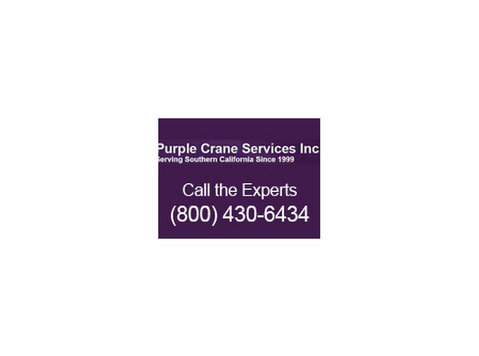پست شده در: دیگر در کالیفرنیا | آخرین بروزرسانی: |
Handling refunds and chargebacks in medical billing is a critical aspect of maintaining a smooth and efficient revenue cycle. Effective management of these financial transactions not only ensures patient satisfaction but also safeguards the financial health of medical practices. This article delves into the intricacies of managing refunds and chargebacks in medical billing, providing actionable insights and best practices for healthcare providers.
Understanding Refunds in Medical Billing
Refunds in medical billing occur when a patient or insurance company has overpaid for services rendered. Common reasons for refunds include billing errors, duplicate payments, and adjustments in insurance claims. Refunds can significantly impact a medical practice by affecting its cash flow and requiring administrative resources to process.
Understanding Chargebacks in Medical Billing
Chargebacks, on the other hand, are transactions disputed by the payer, often initiated by credit card companies at the behest of the patient. Common reasons for chargebacks include unauthorized charges, dissatisfaction with services, or errors in billing. Chargebacks can be more disruptive than refunds, leading to potential revenue losses and increased administrative burdens.
Differences Between Refunds and Chargebacks
While both refunds and chargebacks involve the return of funds, they differ in initiation and handling. Refunds are typically voluntary and initiated by the medical practice upon identifying an overpayment. Chargebacks, however, are initiated by the payer, often without prior notice to the medical practice. Understanding these differences is crucial for implementing effective management strategies.
Common Causes of Refunds and Chargebacks
Several factors can lead to refunds and chargebacks, including:
- Billing errors: Mistakes in coding, incorrect charges, or clerical errors.
- Insurance claim denials: Claims denied by insurance companies due to various reasons.
- Patient disputes: Discrepancies between the patient's expectations and the services billed.
The Financial Impact on Medical Practices
Refunds and chargebacks can disrupt a medical practice's revenue cycle. They affect cash flow, increase administrative costs, and necessitate resources to investigate and resolve disputes. Proactive measures and efficient handling are essential to mitigate these impacts.
Preventing Refunds and Chargebacks
Preventing refunds and chargebacks starts with:
- Accurate billing practices: Ensuring that billing codes and charges are correct.
- Clear communication with patients: Providing detailed billing information and addressing any queries promptly.
- Efficient insurance claim management: Timely and accurate submission of claims to avoid denials.
Steps to Handle Refunds in Medical Billing
Handling refunds involves several steps:
- Identifying the need for a refund: Regular audits and patient communication can help identify overpayments.
- Verifying the overpayment: Cross-checking payment records and insurance adjustments.
- Processing the refund: Issuing the refund through appropriate channels and updating records.
Steps to Handle Chargebacks in Medical Billing
Managing chargebacks requires:
- Identifying the chargeback: Monitoring payment transactions and chargeback notifications.
- Investigating the chargeback reason: Understanding why the chargeback was initiated.
- Responding to the chargeback: Providing documentation and evidence to dispute the chargeback if necessary.
Legal and Regulatory Considerations
Compliance with healthcare laws and regulations is paramount in handling refunds and chargebacks. This includes maintaining accurate documentation, adhering to patient privacy standards, and following regulatory guidelines.
Using Technology to Manage Refunds and Chargebacks
Technology plays a vital role in managing refunds and chargebacks. Medical billing software and automated tracking systems can streamline the process, reduce errors, and provide real-time insights into financial transactions. Integrating technology can significantly enhance efficiency and accuracy.
Staff Training and Education
Staff awareness and education are crucial for accurate billing and handling of refunds and chargebacks. Implementing comprehensive training programs and continuous education can equip staff with the necessary skills and knowledge to manage these transactions effectively.
Best Practices for Communication with Patients
Effective communication with patients involves:
- Transparent billing information: Clearly explaining charges and billing policies.
- Clear refund and chargeback policies: Informing patients about the process and timelines.
- Effective dispute resolution processes: Addressing patient concerns promptly and professionally.
Case Studies and Examples
Real-world scenarios can provide valuable lessons on handling refunds and chargebacks. For instance, a medical practice that implemented regular audits and staff training saw a significant reduction in billing errors and patient disputes. Another example involves a clinic that integrated advanced billing software, leading to improved tracking and faster resolution of chargebacks.
Conclusion
Managing refunds and chargebacks in medical billing requires a proactive and strategic approach. By implementing accurate billing practices, leveraging technology, and fostering clear communication with patients, medical practices can minimize the financial impact and ensure a smoother revenue cycle. Effective management not only enhances patient satisfaction but also strengthens the overall financial health of the practice.
FAQs
What is the main difference between a refund and a chargeback? Refunds are typically initiated by the medical practice due to overpayment, while chargebacks are initiated by the payer, often without prior notice to the practice.
How long does it typically take to process a refund in medical billing? The processing time for a refund can vary but generally takes between 7 to 30 days, depending on the practice’s policies and the payment method used.
What should a medical practice do if a chargeback is disputed? The practice should investigate the chargeback reason, gather relevant documentation, and respond promptly to the chargeback dispute with evidence to support their case.
Are there specific laws governing refunds and chargebacks in medical billing? Yes, there are healthcare laws and regulations that govern refunds and chargebacks, including patient privacy laws and documentation requirements. Compliance with these regulations is essential.
How can technology help in managing refunds and chargebacks effectively? Technology, such as medical billing software and automated tracking systems, can streamline the management of refunds and chargebacks by reducing errors, providing real-time insights, and enhancing overall efficiency.
QPP MIPS
Contact this advertiser







